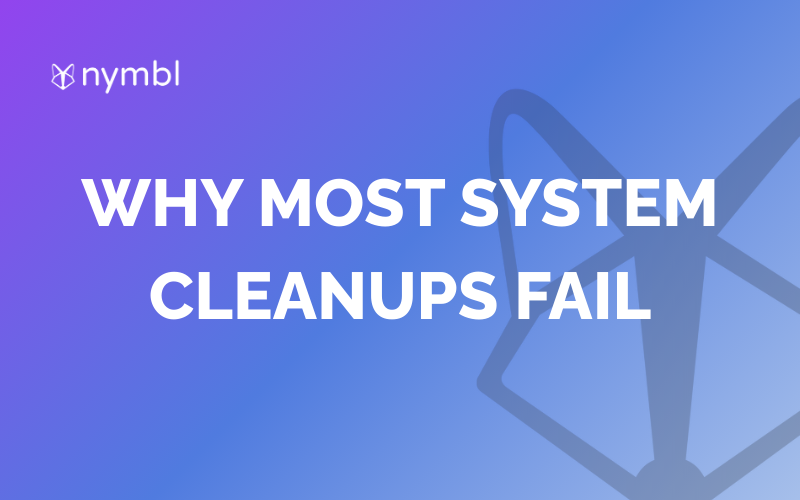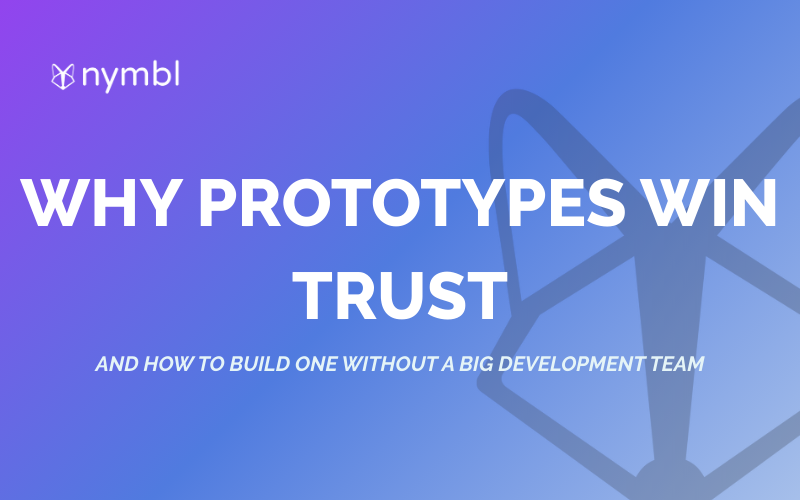In an increasingly digital world, enterprise companies are looking for ways to streamline their app development processes and reduce costs. With the rise of no-code platforms like Bubble.io, businesses can now develop and deploy applications faster without the need for specialized programming skills. In this article, we'll explore how enterprise companies can benefit from using Bubble.io by taking a closer look at its features and how they can streamline app development, reduce costs, and enhance collaboration and communication across teams.
Understanding Bubble.io and Its Features
What is Bubble.io?
Bubble.io is a no-code platform that allows users to create and deploy custom web applications without writing a single line of code. It empowers non-technical teams to design, develop, and manage applications by offering a user-friendly, visual interface that focuses on drag-and-drop components and pre-built templates. By removing the need for extensive coding skills, Bubble.io enables businesses to create applications faster and at a fraction of the cost typically associated with traditional development methods.
Key Features of Bubble.io
Bubble.io is a powerful platform that offers a range of features to help users create custom web applications with ease. Some of the key features of Bubble.io include:
- Visual, drag-and-drop interface
- Bubble.io makes it easy to design and build applications using pre-built elements, layouts, and templates. Its visual, drag-and-drop interface allows users to create custom designs without needing any coding experience. This feature is especially useful for non-technical teams who want to contribute to the development process.
- No-code platform
- One of the most significant advantages of Bubble.io is that it's a no-code platform. This means that users can create functional applications without writing any code. Non-technical team members can contribute to the development process, which speeds up the development process and reduces costs.
- Extensive third-party integrations
- Bubble.io provides users with the ability to connect their app with popular services and platforms, such as Zapier, Stripe, and Salesforce. This feature makes it easy to integrate your app with other tools and services, which can help you streamline your workflow and improve productivity.
- Scalability
- Bubble.io is a scalable platform that can grow with your business. You don't have to worry about managing backend infrastructure or server capacity as your app grows. Bubble.io takes care of all of that for you, so you can focus on building your business.
- Customization
- Bubble.io offers a wide selection of plugins and integrations, which allow you to add specific functionality to your app. For example, you can add e-commerce or social media features to your app with ease. This feature makes it easy to customize your app to meet your specific needs.
Overall, Bubble.io is a powerful platform that makes it easy for anyone to create custom web applications without needing any coding experience. Its range of features, including a visual, drag-and-drop interface, third-party integrations, scalability, and customization, make it a popular choice for businesses of all sizes.
Streamlining the App Development Process
Rapid Prototyping and Development
One of the most significant advantages of using Bubble.io is that it streamlines the app development process by enabling rapid prototyping and delivery. With its visual interface and no-code platform, businesses can quickly iterate on their ideas, prototypes, and test new features. By speeding up the development process and minimizing dependency on technical resources, Bubble.io enables companies to get their applications to market faster and capitalize on emerging trends and opportunities.
With the rapid prototyping capabilities of Bubble.io, businesses can quickly create working prototypes of their applications, allowing them to test their ideas and get feedback from users. This feedback can then be used to refine the application and make it more user-friendly, improving its chances of success in the market.
Bubble.io's platform also allows for rapid development, with features like pre-built templates and drag-and-drop functionality making it easy for developers to create and test new features quickly. This means that businesses can respond quickly to changing market conditions and user needs, ensuring that their applications remain relevant and competitive.
No-Code Platform for Non-Technical Teams
A key challenge for enterprise companies is integrating non-technical stakeholders into the app development process. Bubble.io's no-code platform allows individuals without coding expertise to contribute to the development lifecycle by designing, building, and testing applications. This empowers non-technical teams to collaborate effectively, reducing the burden on developers while incorporating valuable insights from a diverse range of team members throughout the project.
Bubble.io's no-code platform also makes it easier for businesses to hire and train new staff, as they don't need to have extensive coding experience to contribute to the development process. This can help companies to build more diverse and inclusive teams, as they can bring in individuals with a range of skills and backgrounds to contribute to the project.
By enabling non-technical teams to contribute to the development process, Bubble.io also helps to improve communication and collaboration within the organization. This can lead to better outcomes for the project, as everyone involved has a clearer understanding of the goals and objectives of the application.
Integration with Existing Systems
Enterprise companies often have complex, interconnected systems that need to work together seamlessly. Bubble.io's extensive integration capabilities enable businesses to connect their applications to existing tools and platforms, from CRM systems to payment processors, ensuring that their new applications can operate efficiently within their current tech stack. This makes it easier for companies to adopt Bubble.io without having to overhaul their entire infrastructure.
Bubble.io's integration capabilities also make it easier for businesses to scale their applications as they grow. As the application becomes more complex and needs to integrate with more systems, Bubble.io can help to simplify the process and ensure that everything works together seamlessly.
By enabling businesses to integrate their applications with existing systems, Bubble.io helps to reduce the risk of data silos and other inefficiencies that can arise when different systems don't communicate effectively. This can lead to improved productivity and better outcomes for the organization as a whole.
Reducing Development Costs
In today's fast-paced business environment, companies need to be agile and responsive to remain competitive. However, traditional app development methods can be slow and expensive, making it difficult for businesses to keep up with the pace of change. Fortunately, there are new tools and platforms available that can help companies reduce their development costs and accelerate their time-to-market.
Lowering Initial Investment
One of the biggest challenges of traditional app development is the high up-front investment required to assemble a dedicated development team or contract an external agency. This can be a significant barrier to entry for many businesses, particularly startups and small-to-medium-sized enterprises (SMEs). However, with Bubble.io, these costs can be significantly reduced.
Bubble.io provides a no-code platform that enables non-technical team members to participate in the development process. This means that businesses can leverage the skills and expertise of their existing team members, rather than having to hire expensive developers or outsource to external agencies. By empowering a wider range of individuals to contribute to app creation, businesses can save money on development expenses and allocate resources more efficiently.
Minimizing Maintenance Expenses
Another major expense associated with custom-built applications is ongoing maintenance. This can include updates, hosting fees, and ongoing infrastructure costs. However, Bubble.io allows companies to reduce these expenses by offering a platform that requires minimal coding knowledge to maintain and provides automatic infrastructure scaling.
With Bubble.io, businesses can avoid being locked into costly and time-consuming maintenance agreements. Instead, they can focus on growing their business, confident in the knowledge that their applications are being maintained and updated automatically.
Scaling with Business Growth
As businesses grow, they need to ensure their applications can scale to meet increased demand. This can be a major challenge for traditional app development methods, which often require significant manual adjustments to infrastructure and code.
However, with Bubble.io's built-in scalability, companies can adapt seamlessly as their user base and traffic grow. This means that businesses can avoid the need for significant additional investment or infrastructure changes, enabling them to focus on growing their business rather than managing their technology stack.
Overall, Bubble.io offers a powerful platform for businesses looking to reduce their development costs and accelerate their time-to-market. By leveraging no-code tools and built-in scalability, businesses can create custom applications quickly and efficiently, while minimizing ongoing maintenance expenses and ensuring their technology stack can keep pace with their growth.
Enhancing Collaboration and Communication
Effective collaboration and communication are crucial components of any successful app development project. With the right tools and strategies in place, teams can work together seamlessly, streamline their efforts, and create better products. Bubble.io is a no-code platform that offers a range of features designed to enhance collaboration and communication during the app development process.
Real-Time Collaboration Tools
One of the most significant advantages of Bubble.io is its real-time collaboration tools. These tools allow multiple stakeholders to work on a project simultaneously, minimizing delays and fostering a more productive work environment. With Bubble.io, team members can communicate with each other in real-time, share ideas, and work together to solve problems. This level of collaboration ensures that everyone is on the same page and working towards the same goals.
Version Control and History
Keeping track of changes and iterations throughout the development process can be challenging, especially when working with a team of diverse contributors. With Bubble.io's version control and history features, businesses can easily review, track, and manage modifications to their applications. This ensures that everyone remains on the same page during development, reduces confusion, and fosters better decision-making. By having a clear record of changes, team members can quickly identify any issues and work together to resolve them.
Customizable User Permissions
Managing access to your application during development can be a delicate balancing act between ensuring that the right people have access while protecting your project's integrity. Bubble.io offers customizable user permissions, allowing businesses to define access levels based on roles and responsibilities. This ensures that only authorized team members can make changes, enhancing security and minimizing the risk of unwanted modifications to the application. With Bubble.io, businesses can have confidence that their projects are secure and that their teams are working efficiently and effectively.
In conclusion, Bubble.io is a powerful and versatile no-code platform that can significantly benefit enterprise companies seeking to streamline their app development processes, reduce costs, and enhance collaboration across their teams. With its real-time collaboration tools, version control and history features, and customizable user permissions, Bubble.io offers a range of advantages that can help businesses develop applications faster and more affordably. By leveraging these features, businesses can create better products, improve communication and collaboration, and ultimately achieve their goals.






.png)


